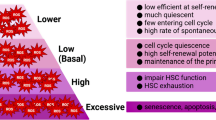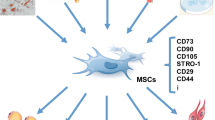Abstract
Today, liver transplantation (LT) is the only established treatment for end-stage liver diseases. The development of LT, including OLT, cadaveric LT, split LT, living donor LT (LDLT), brings hopes to patients with these diseases. However, increasing donor shortage, rejection and life-long immunosuppression with its side effects are the major limitations of this therapy strategy. Bone marrow-derived stem cells (BMDSCs) are capable of differentiating into hepatocyte-like cells and contribute to liver injury repair. The microenvironment of liver injury caused by rejection, ischemia/reperfusion, loss of liver mass, recurrence of HCV and “small-for-size syndrome” after LT can attract a variety of bone marrow-derived stem cell population to the peripheral circulation and then migration to the injury liver to promote the hepatic function restoration. Additionally, BMDSCs can also take part in the functional regeneration of living donor liver after LDLT. This participation in liver regeneration may be associated to the interaction between SDF-1and its receptor CXCR4, involving HGF, IL-8, MMP9, and VEGF/VEGFR-2. BMDSC with its bio-characteristics could maintain the allograft tolerance from different angles and in different ways. In conclusion, BMDSCs transplantation, as a new assistant therapeutic method for LT, will expand the space of LT, and provide more survival opportunities for the patients suffering liver diseases in the future
Similar content being viewed by others
References
Wiesner R H, Rakela J, Ishitani M B, et al. Recent advances in liver transplantation. Mayo Clin Proc, 2003, 78: 197–210
Abouljoud M, Yoshida A, Dagher F, et al. Living donor and splitliver transplantation: An overview. Tansplant Proc, 2003, 35: 1772–1774
Charlton M. Recurrence of hepatitis C infection: Where are we now? Liver Transplant, 2005, 11,S1: S57–S62
Marco V, Alessandro C, Fabio P, et al. Analysis of risk factor for tumor recurrence after liver transplantation for hepatocellular carcinoma: Key role of immunosuppression. Liver Transplant, 2005, 11: 497–503
Wang Y F, Nan X, Li Y H, et al. Induction of umbilical blood-Derived β2M-c-met+ cell into Hepatocyte-like cells by coculture with CFSC/HGF cells. Liver transplant, 2005, 11: 635–643
Wang Y F, Nan X, Zhang R, et al.Differentiation of bone marrow derived Thy-1+β2M− cells into hepatocytes induced by coculture with transgenic CFSCs. Chin Sci Bull, 2004, 49(9): 889–894
Robert L, Helen B, Douglas M, et al. Handbook of Stem Cells. Vol 2. Washington: Academic Press, 2004. 487–490
Okumura K, Nakamura K, Hisatomi Y, et al. Salivary gland progenitor cells induced by duct ligation differentiate into hepatic and pancreatic lineages. Hepatology, 2003, 38: 104–113
Petersen B E, Bowen W C, Patrene K D, et al. Bone marrow as a potential source of hepatic oval cells. Science, 1999, 284: 1168–1170
Jang Y Y, Collector M I, Baylin S B, et al. Hematopoietic stem cells convert into liver cells within days without fusion. Nat Cell Biol, 2004, 6: 532–539
Schwartz R E, Reyes M, Koodie L, et al. Multipotent adult progenitor cells from bone marrow differentiate into functional hepatocyte-like cells. J Clin Invest, 2002, 109: 1291–1302
Oyagi S, Hirose M, Kojima M, et al. Therapeutic effect of transplanting HGF-treated bone marrow mesenchymal cells into CCl4-injured rats. J Hepatol, 2006, 44: 742–748
Lagasse E, Connors H, A-Dhalimy M, et al. Purified hematopoietic stem cells can differentiate into hepatocytes in vivo. Nat Med, 2000, 6: 1229–1234
Theise N D, Nimmakayalu M, Gardner R, et al. Liver from bone marrow in humans. Hepatology, 2000, 32: 11–16
Fujii H, Hirose T, Oe S, et al. Contribution of bone marrow cells to liver regeneration after partial hepatectomy in mice. J Hepatol, 2002, 36: 653–659
Vassilopoulos G, Wang P, Russell D W. Transplanted bone marrow regenerates liver by cell fusion. Nature, 2003, 422: 901–904
Wang X, Willenbring H, Akkari Y, et al. Cell fusion is the principal source of bone-marrow-derived hepatocytes. Nature, 2003, 422: 897–901
Sato Y, Araki H, Kato J, et al. Human mesenchymal stem cells xenografted directly to rat liver are differentiated into human hepatocytes without fusion. Blood, 2005, 106: 756–763
Wilson K S, Timmons C F, Hilton D S, et al. Chromosomal instability in hereditary tyrosinemia type I. Pediatr. Pathol, 1994, 14: 1055–1057
Harris R G, Herzog E L, Bruscia E M, et al. Lack of a fusion requirement for development of bone marrow-derived epithelia. Science, 2004, 305: 90–93
Pahlavan P S, Feldmann R E, Zavos C, et al. Prometheus’ challenge: Molecular, cellular and systemic aspects of liver regeneration. J Surg Res, 2006, 134: 238–251
Tanaka K, Ogura Y. “Small-for-size graft” and “Small-for-size syndrome” in living donor liver transplantation. Yonsei Med J, 2004, 45(6): 1089–1094
Liu F, Pan X B, Chen G D, et al. Hematopoietic stem cell mobilization after rat partial orthotopic liver transplantation. Transplant Proc, 2006, 38: 1603–1609
Avital I, Feraresso C, Aoki T, et al. Bone marrow-derived liver stem cell andmature hepatocyte engraftment in livers undergoing rejection. Surgery, 2002, 132: 384–390
Liu F, Pan X B, Chen G D, et al. Hematopoietic stem cells mobilized by granulocyte colony-stimulating factor partly contribute to liver graft regeneration after partial orthotopic liver transplantation. Liver Transplant, 12: 1129–1137
Lemoli R M, Lucia C, Simona T, et al. Mobilization of bone marrow-derived hematopoietic and endothelial stem cells after orthotopic liver transplantation and liver resection. Stem Cells, 2006, 24: 2817–2825
Gehling U M, Willems M, Dandri M, et al. Partial hepatectomy induces mobilization of a unique population of haematopoietic progenitor cells in human healthy liver donors. J Hepatol, 2005, 43: 845–853
Aurich I, Mueller L P, Aurich H, et al. Functional integration of human mesenchymal stem cell-derived hepatocytes into mouse livers. Gut, 2007, 56(3): 405–415
Petit I, Szyper-Kravitz M, Nagler A, et al. G-CSF induces stem cell mobilization by decreasing bone marrow SDF-1 and up-regulating CXCR4. Nat Immunol, 2002, 3: 687–694
Terada R, Yamamoto K, Hakoda T, et al. Stromal cell-derived factor-1 from biliary epithelial cells recruits CXCR4-positive cells: Implications for inflammatory liver diseases. Lab Invest, 2003, 83: 665–672
Goddard S, Williams A, Morland C, et al. Differential expression of chemokines and chemokine receptors shapes the inflammatory response in rejecting human liver transplants. Transplantation, 2001, 72: 1957–1967
Kollet O, Shivtiel S, Chen Y Q, et al. HGF, SDF-1, and MMP-9 are involved in stress-induced human CD34+ stem cell recruitment to the liver. J Clin Invest, 2003, 112, 160–169
Kuyvenhoven J P, Verspaget H W, Gao Q, et al. Assessment of serum matrix metalloproteinases MMP-2 and MMP-9 after human liver transplantation: Increased serum MMP-9 level in acute rejection. Transplantation, 2004, 77: 1646–1652
Kuyvenhoven J P, Molenaar I Q, Verspaget H W, et al. Plasma MMP-2 and MMP-9 and their inhibitors TIMP-1 and TIMP-2 during human orthotopic liver transplantation. The effect of aprotinin and the relation to ischemia/reperfusion injury. Thromb Haemost, 2004, 91, 506–513
Pruijt J F, Verzaal P, van Os R, et al. Neutrophils are indispensable for hematopoietic stem cell mobilization induced by interleukin-8 in mice. Proc Natl Acad Sci USA, 2002, 99: 6228–6233
Dalakas E, Newsome P N, Harrison D J, et al. Hematopoietic stem cell trafficking in liver injury. FASEB J, 2005, 19: 1225–1231
Wang X, Ge S, McNamara G, et al. Albumin-expressing hepatocyte-like cells develop in the livers of immune-deficient mice that received transplants of highly purified human hematopoietic stem cells. Blood, 2003, 101: 4201–4208
Russo F P, Alison M R, Bigger B W, et al. The bone marrow functionally contributes to liver fibrosis. Gastroenterology, 2006, 130: 1807–1821
Tatiana K, Hiroshi U, Nikki F, et al. Bone marrow-derived fibrocytes participate in pathogenesis of liver fibrosis. J Hepatol, 2006, 45: 429–438
Rubio D, Garcia-Castro J, martin M C, et al. Spontaneous human adult stem cell transformatiom. Cancer Res, 2005, 65: 3035–3039
Bissell D M. Chronic liver injury, TGF-beta, and cancer. Expmol Med, 2001, 33: 179–190
Wu X Z, Yu X H. Bone marrow cells: The source of hepatocellular carcinoma? Med Hypotheses, 2007, 69: 36–42
Devlin J, Doherty D, Thomson L, et al. Defining the outcome of immunosuppression withdrawal after liver transplantation. Hepatology, 1998, 27: 926–933
Spitzer T R, Delmonico F, Tolkoff-Rubin N, et al. Combined histoincompatibility leukocyte antigen-matched donor bone marrow and renal transplantation for multiple myeloma and end stage renal disease: The induction of allograft tolerance through mixed lymphohematopoietic chimerism. Transplantation, 1999, 68: 480–484
Mellgren K, Fasth A, Saalman R, et al. Liver transplantation after stem cell transplantation with the same living donor in a monozygotic twin with acute myeloid leukemia. Ann Hemato, 2005, 84: 755–757
Susanne M M, Christina P, Alfred K, et al, Successful stem cell transplantation following orthotopic liver transplantation from the same haploidentical family donor in a girl with hemophagocytic lymphohistiocytosis. Blood, 2000, 96: 3997–3999
Donckier V, Troisi R, Toungouz M, et al. Donor stem cell infusion after non-myeloablative conditioning for tolerance induction to HLA mismatched adult living-donor liver graft. Transpl Immunol, 2004, 3: 139–146
Donckier V, Troisi R, Le Moine A, et al. Early immunosuppression withdrawal after living donor liver transplantation and donor stem cell infusion. Liver Transplant, 2006, 12: 1523–1528
Bagley J, Tian C, Sachs D H, et al. Induction of T-cell tolerance to an MHC class I alloantigen by gene therapy. Blood, 2002, 99: 4394–4399
Merion R M, Schaubel D E, Dykstra D M, et al. The survival benefit of liver transplantation. Am J Transplant, 2005, 5: 307–313
Kokudo N, Sugawara Y, Imamura H, et al. Tailoring the type of donor hepatectomy for adult living donor liver transplantation. Am J Transplant, 2005, 5: 1694–1703
Author information
Authors and Affiliations
Corresponding author
Additional information
Supported by State 863 High Technology R&D Project of China (Grant No. 2006AA02A107) and National Natural Science Foundation of China (Grant No. 30400415)
About this article
Cite this article
Luo, H., Wang, Y., Kong, W. et al. Therapeutic applications of bone marrow-derived stem cells in liver transplantation for end-stage liver diseases. CHINESE SCI BULL 52, 2449–2456 (2007). https://doi.org/10.1007/s11434-007-0392-9
Received:
Accepted:
Issue Date:
DOI: https://doi.org/10.1007/s11434-007-0392-9




